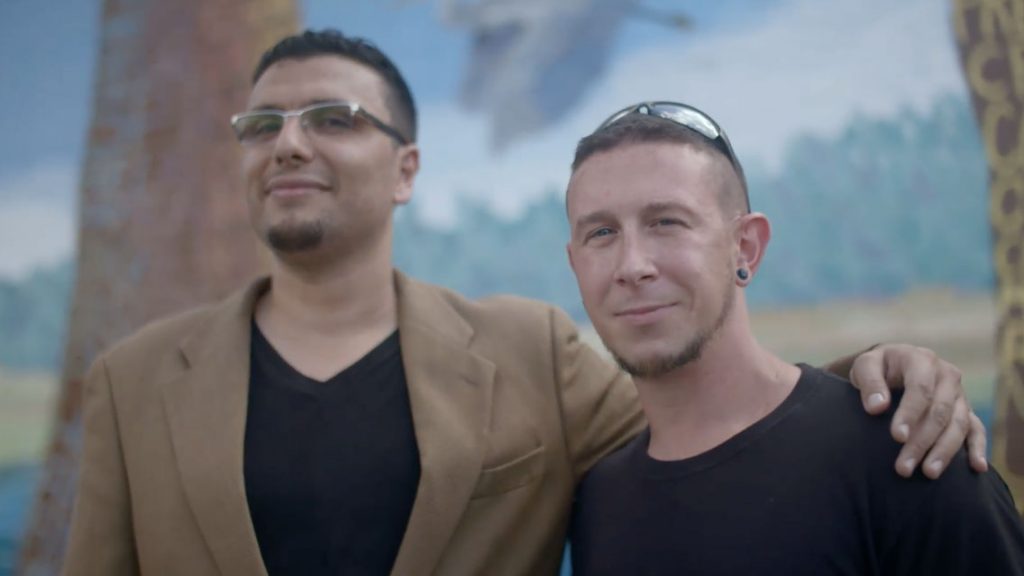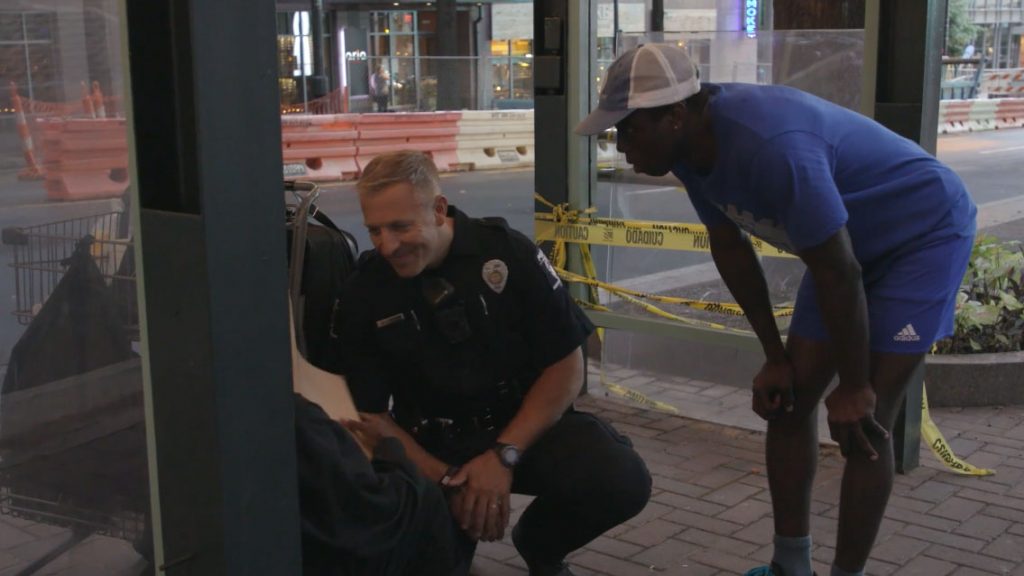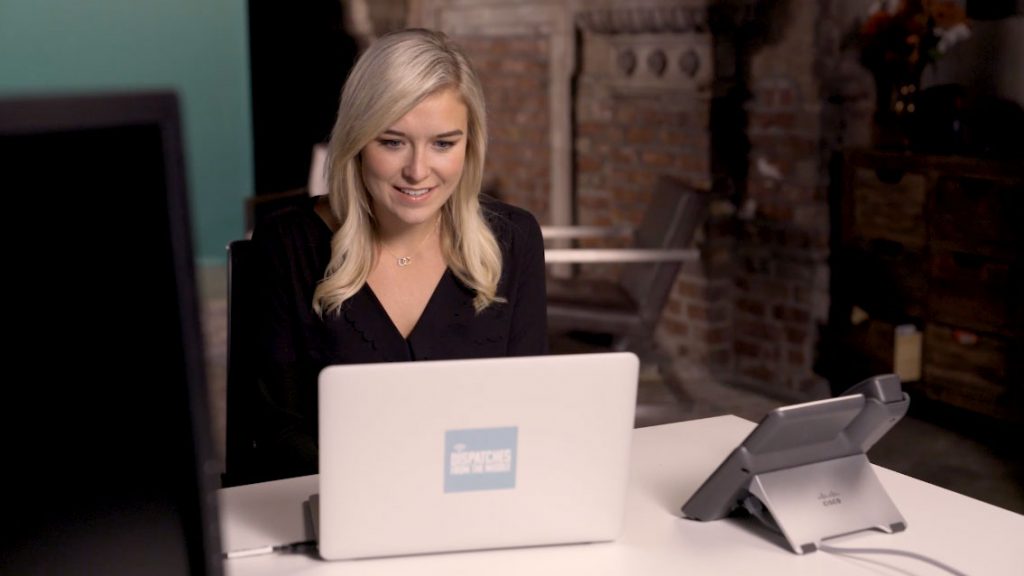What do Anderson Cooper, Jorge Ramos, and Michael Koenigs have in common? Answer: they’re all hosts of new programs streaming on Facebook Watch. Unlike the other two, Koenigs may not be a household name – yet – but his show, More in Common, from the ABC Television Stations, often outperforms his more famous competitors from the cable and broadcast networks.
More in Common is one of three shows produced by local station groups for Facebook Watch – part of a Facebook-funded test of original news programs that’s been underway since July.
All three shows are tailored for the time of Trump. TEGNA’s entry, An Imperfect Union, has much in common with More in Common: both feature stories about political or cultural opposites who come together in search of common ground.
Hearst’s Dispatches from the Middle has less kumbaya in its DNA, but it does feature stories from the heart of America, not the (implicitly elitist) coasts.

For Facebook, which approved the concepts but exercises no editorial control, the experiment is designed to suss out what works best on the Watch platform. The shows are explicitly designed to trigger a lively conversation among users. “Innovation and community are at the heart of what we’re optimizing for in the test,” says Josh Mabry, who leads Facebook’s local news partnerships in the U.S. “There’s a great opportunity to think about the format: how might it drive community engagement? What format works best?”
For the stations, it’s an experiment in slickly produced episodic programming, suitable for “bingeing” – a chance to color well outside the lines of traditional local TV news formulas in search of new viewers. And, for a while at least, Facebook is paying the bills.
More in Common comes from Localish, the ABC Stations’ digital production arm. Koenigs, who serves as executive producer and reporter, is channeling his own previous work on Localish: his video about a former neo-Nazi who has his swastika tattoos removed after an “unlikely friendship” with his African-American parole office went crazy viral last year. Each week, Koenigs and his production team of five publish another of what the show’s tagline calls “inspiring stories of Americans who come together despite their difference and find common ground in unexpected ways.”
Examples include a Los Angeles judge and a convicted murderer who have become running buddies; a Chicago softball league that pits former gang members against cops; and a San Francisco program that brings Republicans and Democrats together for a meal – “Make America Dinner Again.”
Those three happen to be ABC O&O markets – not a coincidence. The ABC stations contribute ideas, post the episodes on their own Facebook pages, and broadcast excerpts of the stories to promote the full show on Facebook Watch.
But Koenigs stresses that these are local stories designed to resonate with a national audience. “The strongest story wins. Location isn’t as important as we thought.” Viewers are “meeting people from all over America that they would otherwise never be exposed to.”
The most popular episode to date: the “unlikely friendship” (sound familiar?) between a former Ku Klux Klan member and Syrian Muslim refugee in Georgia, had nearly 6 million views as of mid-November.
TEGNA’s An Imperfect Union builds on the idea of bridging divisions between opposites with a clever reality-show twist: the subjects agree to perform a community service together. So Charlotte, North Carolina cop Matt hands out sneakers to the homeless with Corry, a young black man who’s been arrested more than 20 times; immigration hard-liner Ron volunteers at a Minneapolis soup kitchen with now-naturalized Somali refugee Asma; civil rights activist Peter and conservative radio show host Grant feed the homeless at a Dallas shelter after a pointed debate about NFL kneeling protests; atheist Aleta and believer Mallory hand out school supplies in Knoxville as they debate the role of religion in the classroom; gun violence victim Faye and gun-rights activist Chris – both Army veterans – pack food for charity in Macon, Georgia. You get the idea.

The idea sprang from a TEGNA brainstorming session to come up with distinctive projects for the 2018 midterm elections. It turned out to be just what Facebook was seeking. The show addresses a wide variety of issues — many of them, like assisted suicide or the Brett Kavanaugh confirmation battle, “third-rail topics,” in the words of TEGNA Chief Digital Officer Adam Ostrow: “How can we find some common ground in our communities given the current climate?”
A TEGNA team manages the freelancers who produce the weekly show. The owned stations are only indirectly involved. All the episodes so far have been in TEGNA markets, with stations contributing informally to what may be the hardest part of the process: finding the right stories and central characters. There’s no narration and no anchor or “host” – just an interviewer who is occasionally identified as a “TEGNA Journalist.”
TEGNA is trying to turn An Imperfect Union into a seven-days-a-week event on Facebook, with a new element – a news article, an issue-related question posed to users, a selection of bonus material – popping up virtually every day to amplify the Wednesday episode releases. The stations are encouraged to air excerpts of the episodes on their broadcasts and host related conversations on their own Facebook pages.
Dispatches from the Middle, produced by Hearst’s digital content division Stitch, describes itself as “incredible stories from a local community just like yours.” The show offers one “dispatch” a week, from an unsolved set of serial murders in New Mexico to a bionic breakthrough that helps a blind Iowa man see to an Ohio community rallying around a terminally ill boy to a DNA-linked clue that could break a 26-year-old Pennsylvania cold case.
The format – essentially short magazine pieces – is the most TV-like of the three Facebook Watch local entries. There’s a host – Alexandra Stone, moonlighting from her weekend anchor job at Hearst’s KETV-Omaha – who presents the show from a hip-looking brick-lined studio and narrates each story. Even though the Hearst brand is never mentioned – Stitch gets all the credit – Dispatches draws much more overtly on the Hearst stations, relying heavily on their footage and featuring their reporters in Skype interviews with Stone to talk more about each story.

The “from the middle” concept plays to the Hearst stations’ strengths as well, explains Hearst Television’s Chief Digital Content Officer and Dispatches executive producer Andrew Fitzgerald. “The concept is more about highlighting stories that might not always find national play, less than it is a counterpoint to national or coastal media. We are definitely leaning on Hearst’s unique distribution among TV markets,” he told me via email.
Fitzgerald ran Twitter’s Moments before coming to Hearst, and Dispatches is aggressive in its callout to the Facebook community. Stone reads a series of Facebook comments each week and directly urges viewers to contribute to the conversation. “I definitely think much of what we learn from Dispatches will inform more of our work on digital – whether on the central team or at the stations,” says Fitzgerald. “Our central digital teams will often take the vanguard in new experiments to test, measure, and distill learnings that serve the whole group.”
TEGNA’s Adam Ostrow says much the same about An Imperfect Union, which is “driven from the center but will have benefits to the stations down the road.”
One of those benefits will be to help answer some questions with direct implications for future revenue: What do users want from local stations (and social media platforms, for that matter) beyond what they’re getting now? Can highly-produced episodic programming attract and engage new users? What is a sustainable business model around creating original content for social media?
Like the three station groups, Facebook, too, is in learning mode as this test unfolds. As TEGNA’s Ostrow puts it, “This is a chance to figure out whether Facebook can be a platform for destination video viewing.” Says Facebook’s Josh Mabry: “We didn’t know what would work, and candidly, we still don’t know what will work in this space.”
Do you have experiments involving new programs and platforms that you’d like us to check out and share? Email us at cronkitenewslab@asu.edu.